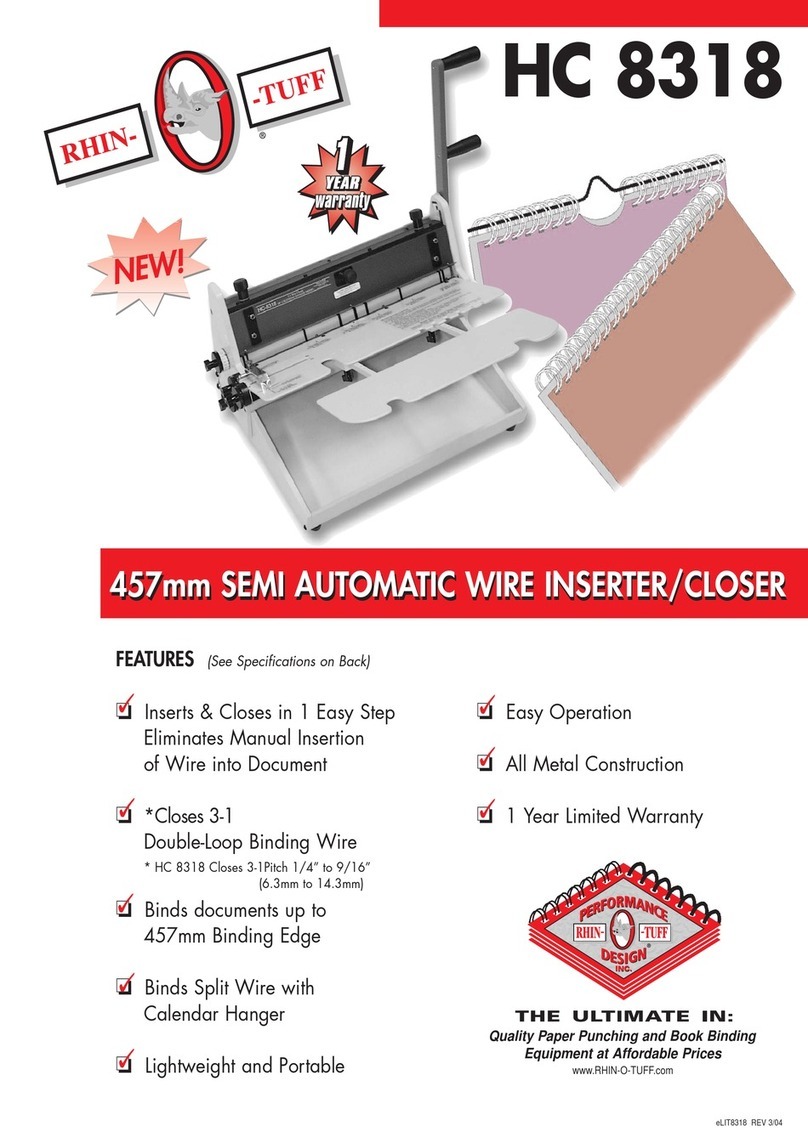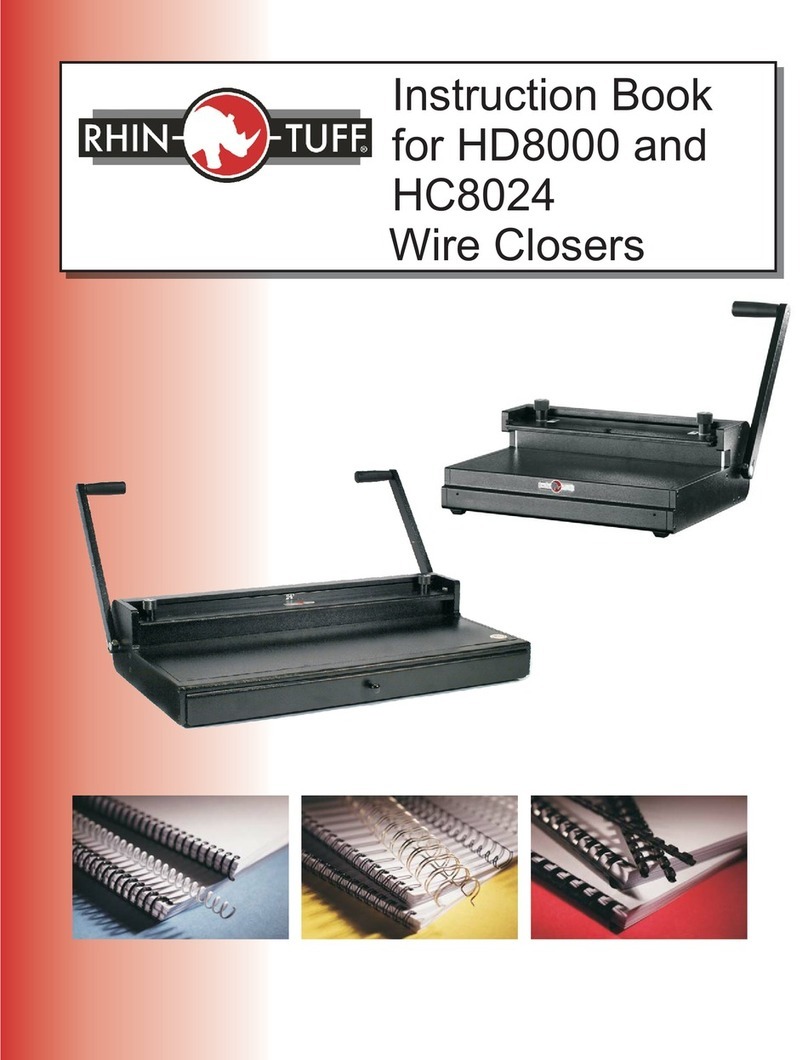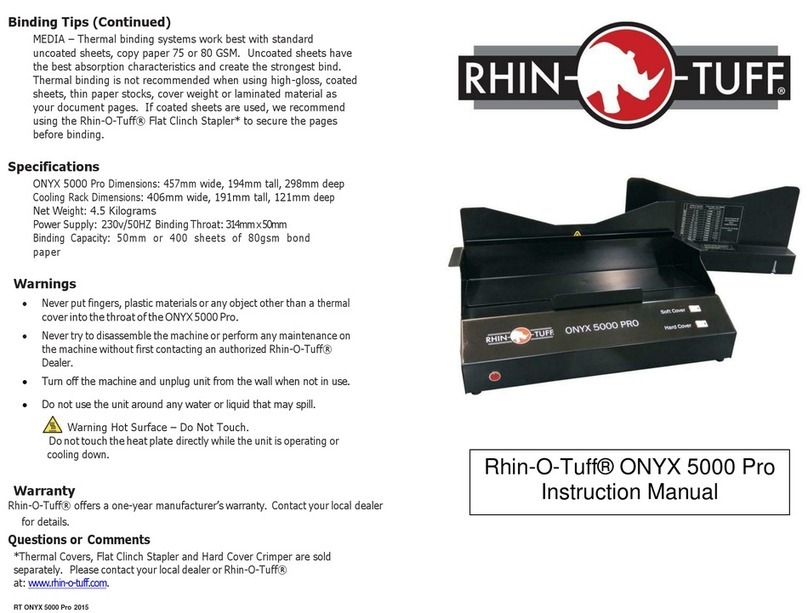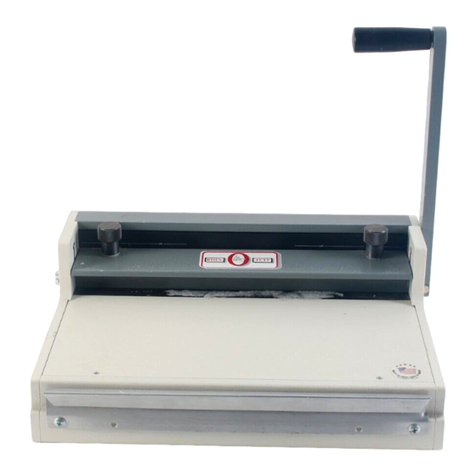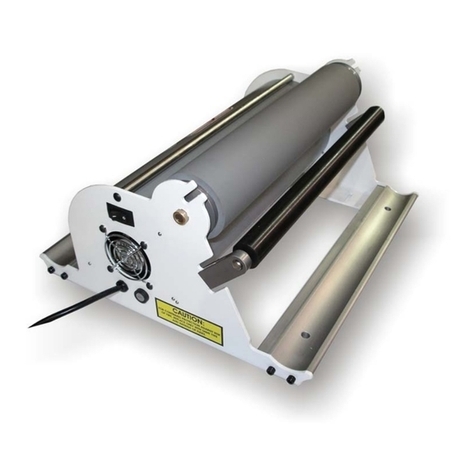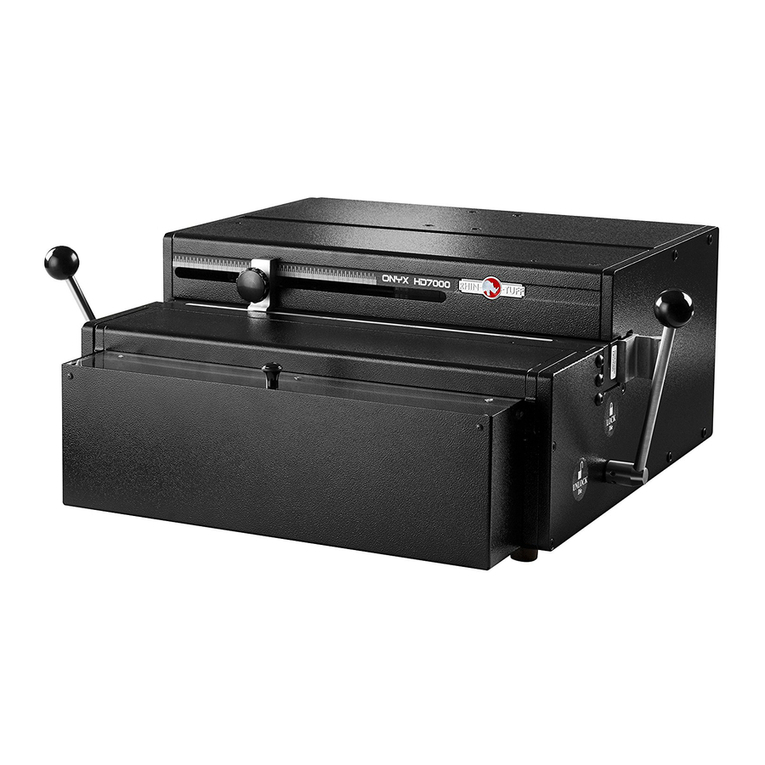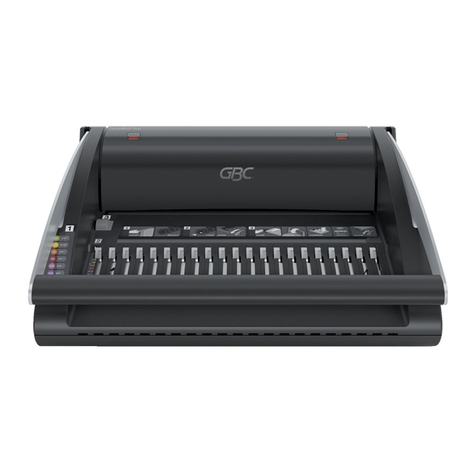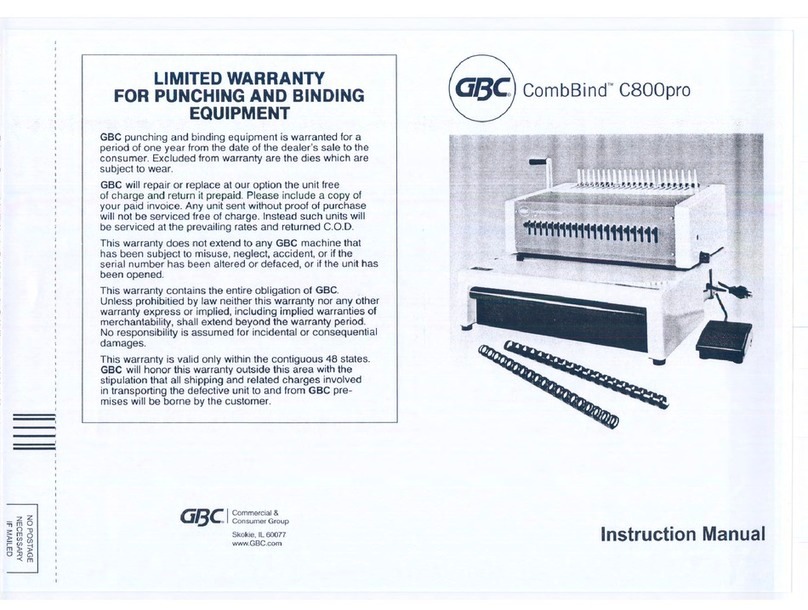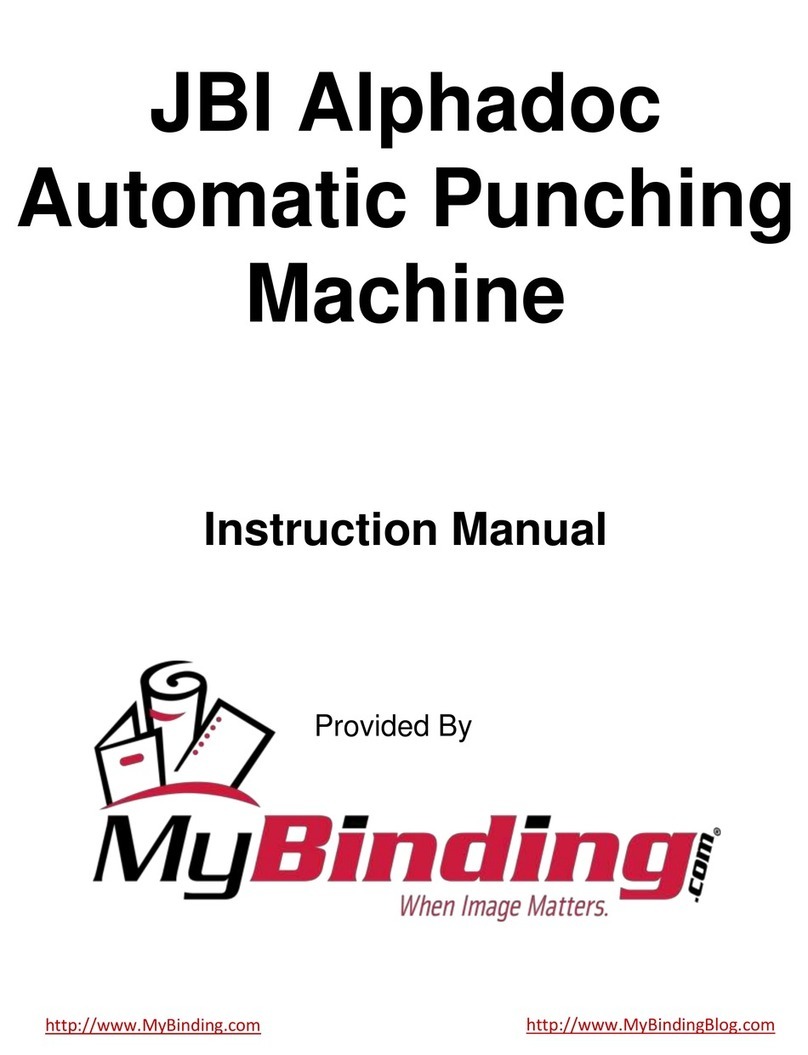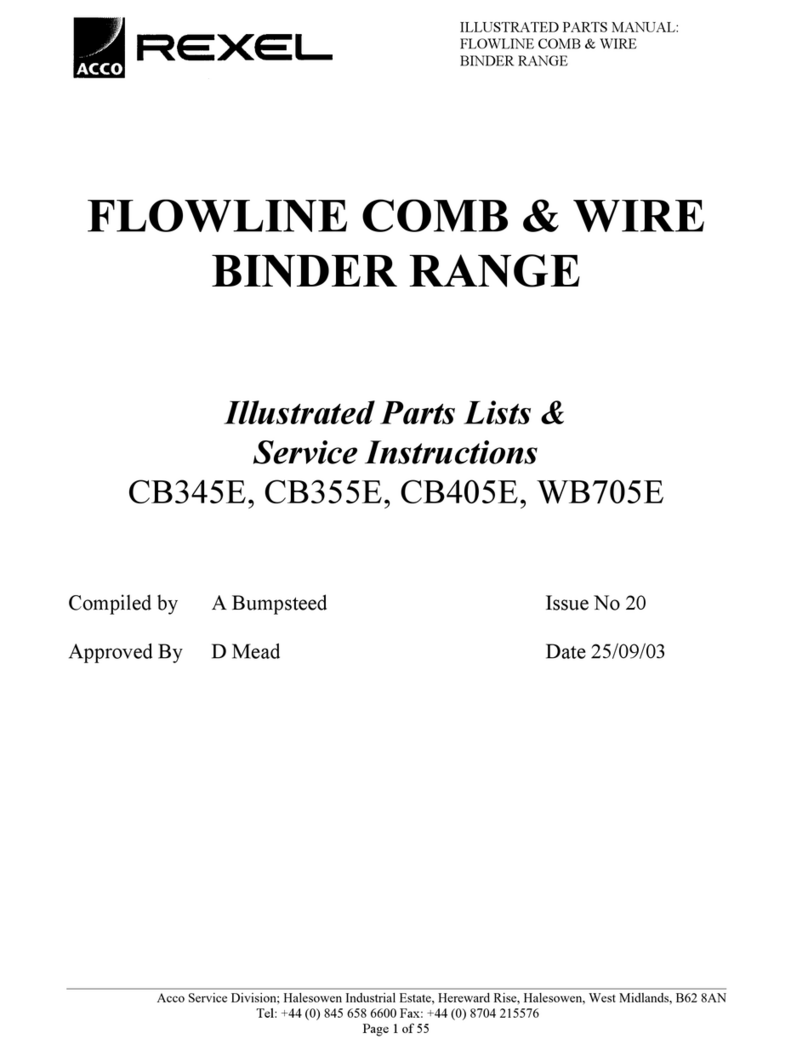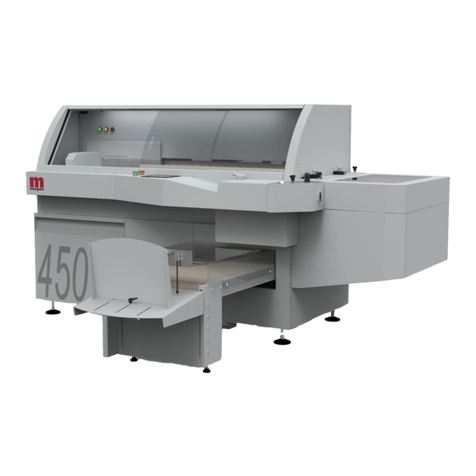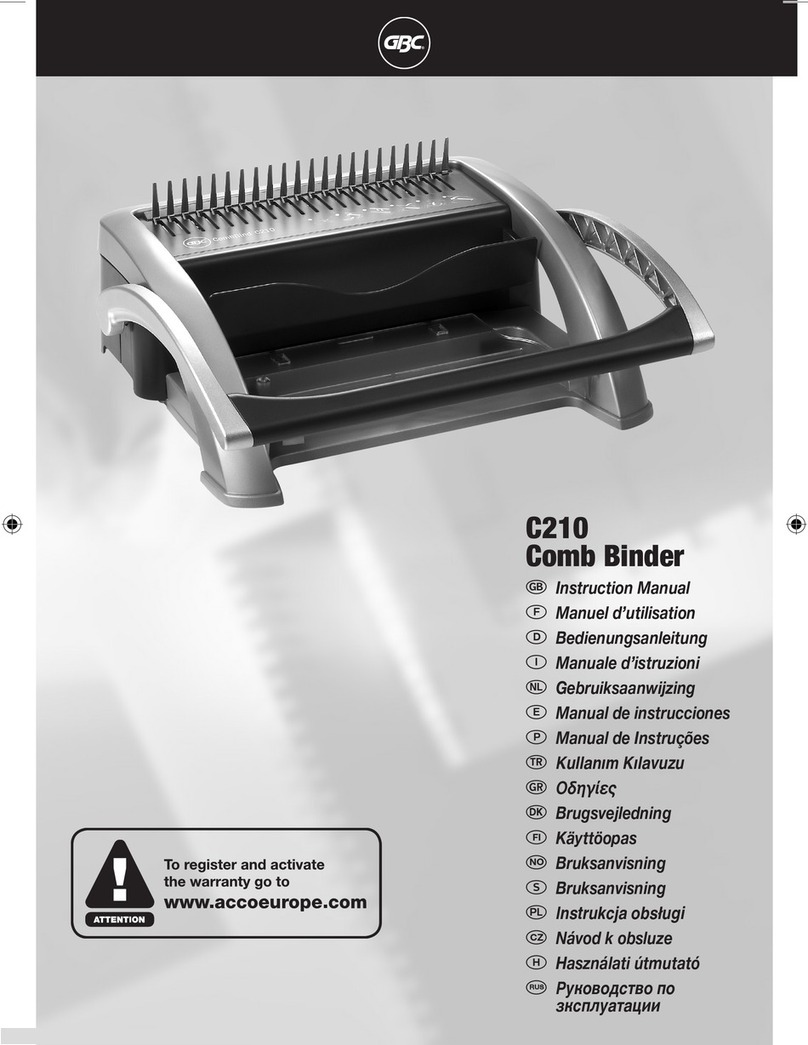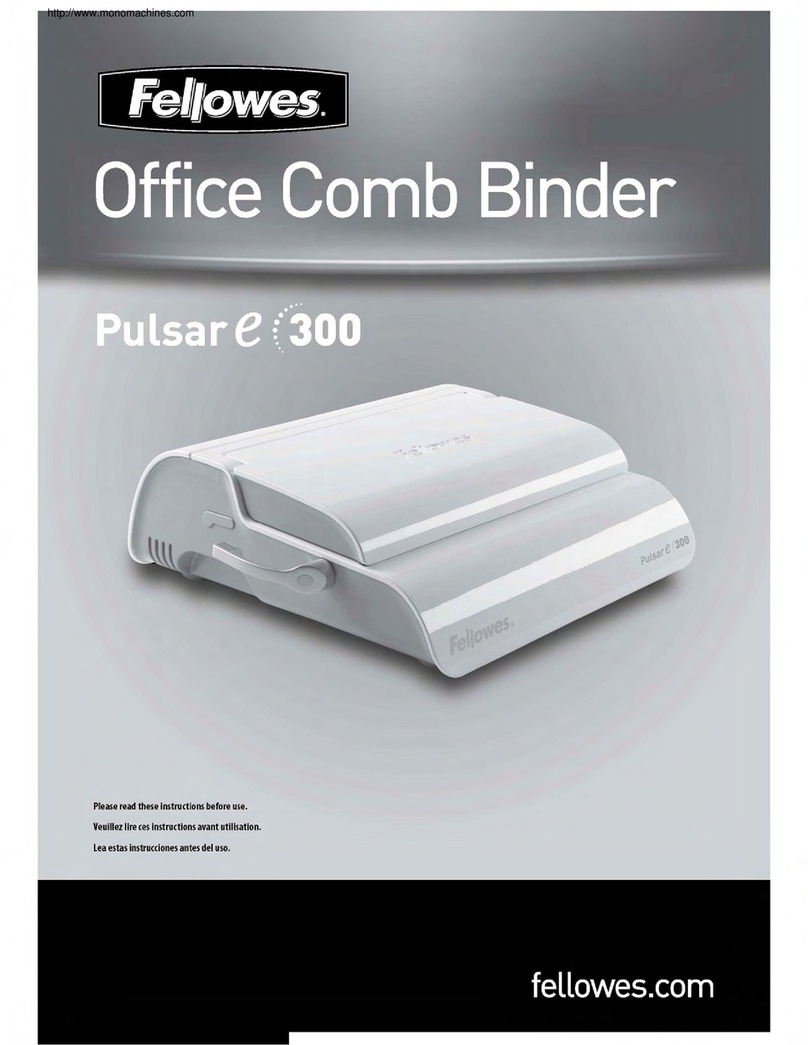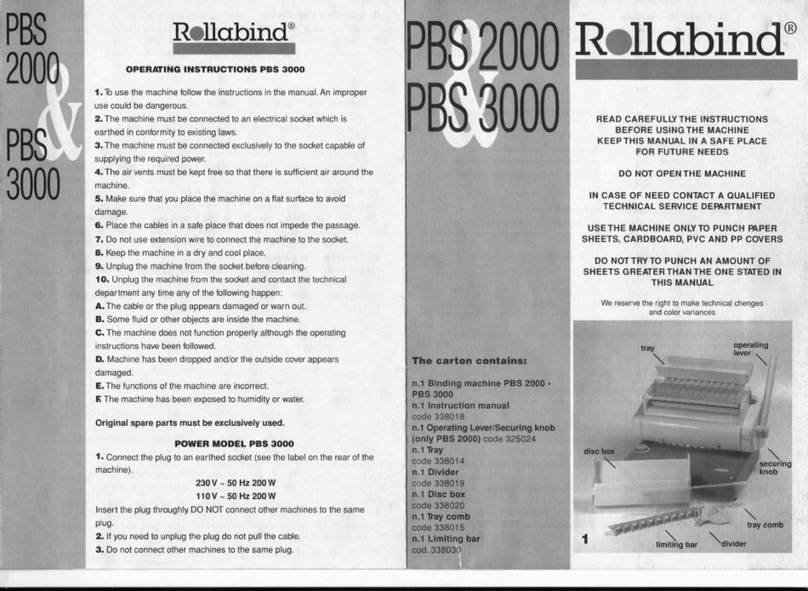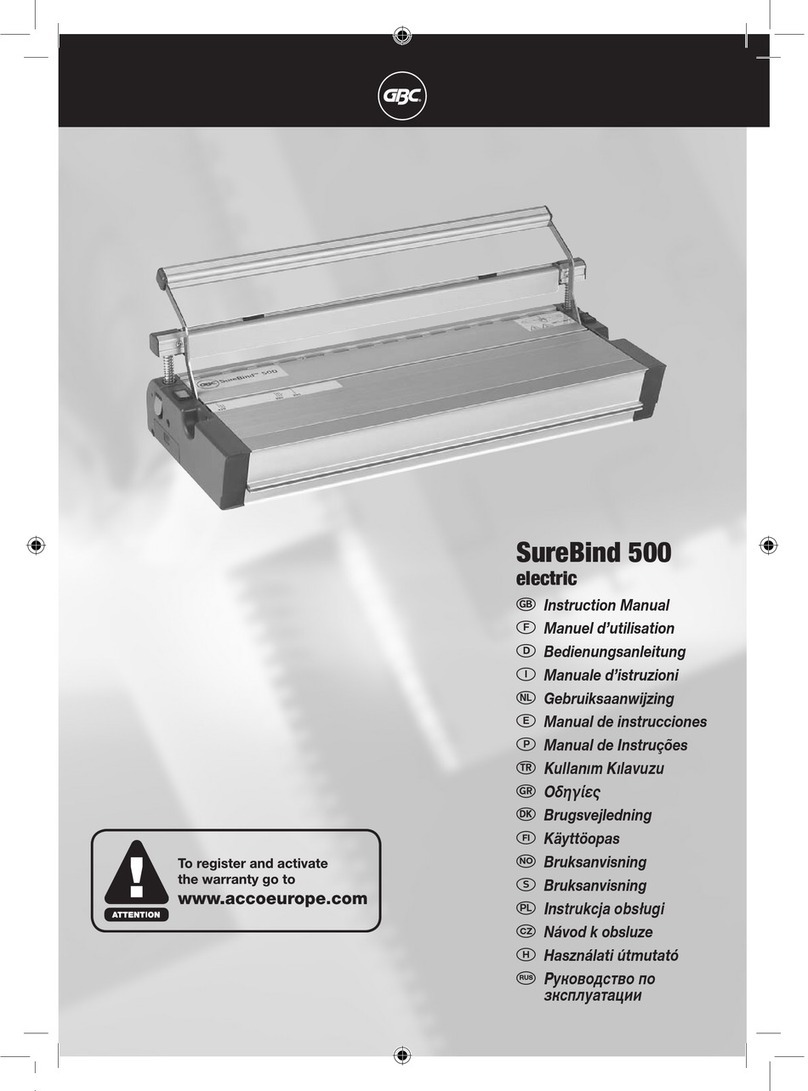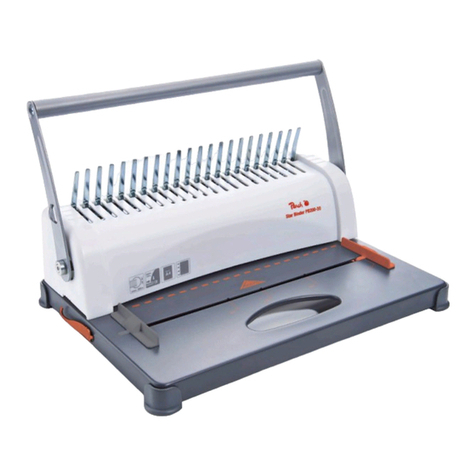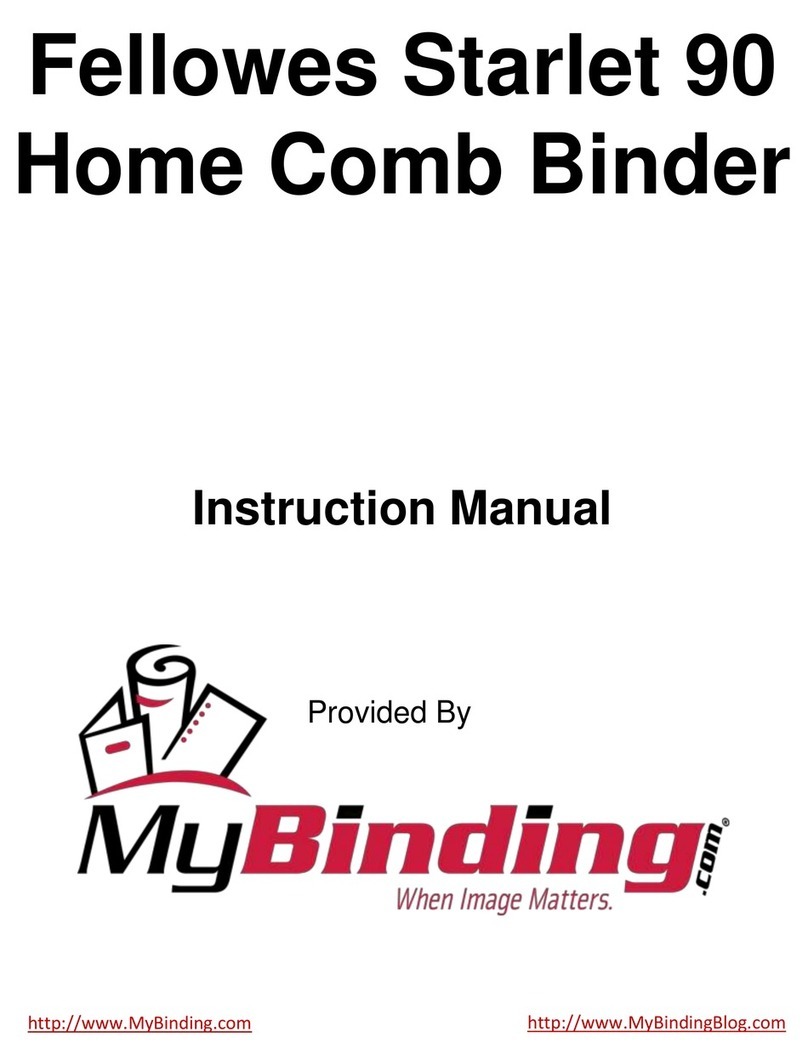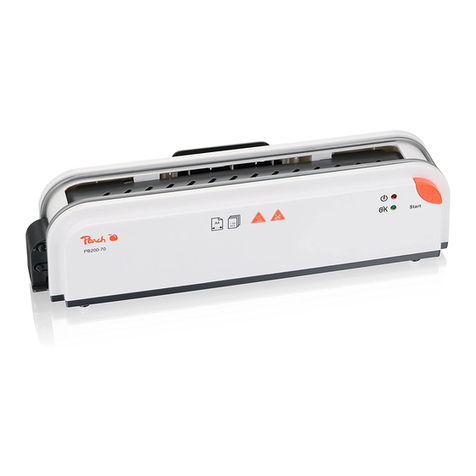
7
Placing the PAL-14 in the proper location & Binding Styles;
Locate a clear work area with an outlet within 5 feet that provides a 15-amp
service (16-amp European) which is protected at the customer’s circuit box. The
work area must be a solid, firm cabinet or a heavy duty table with a flat level
surface. Power cord shall be certified for the country where the machine will
be installed.
Placing your PAL-14 in the proper location will also depend on your punching
technique. If you like to stand while punching, mount the PAL-14 on top of your
punch machine or Performance Design’s APES-14 or APES-14-77. If you want to
punch paper while seated, and the PAL-14 is attached to the APES-14, you may
notice an inconvenience while trying to pick paper and load it into the APES–14
paper slot while the previous loaded paper is exiting. It may be best to use the
PAL-14 as a stand alone unit. The best location when using the PAL-14 in this
mode would be to the right of the APES-14 and punch. The next chapters will
cover all the optional mountings. Review all of them, pick and follow one then
continue to Chapter 9; Overview of the PAL-14 Paper Separator.
Mounting the PAL-14 onto the HD-6500, HD-7000 or HD-7700;
Locate the Mate Blocks, 1 ¼” long ¼”-20 socket head
screws, and Allen wrenches provided inside the
shipping kit as shown to the right.
These will be required in the next step.
ALWAYS USE TWO PEOPLE TO MOVE
AN ELECTRIC PUNCH!
HD-6500 and HD-7000 Instructions;
See Illustration 5.1 on next page.
Locate the two top-most and rear-most
screws on the side of your HD-
6500/7000. Inserting the short end of
the Allen wrench into the screw head,
remove the two screws.
HD-7700 Instructions;
See Illustration 5.2 on next page.
Locate the two top-most and forward-
most screws on the side of your HD-
7700. Inserting the short end of the
Allen wrench into the screw head,
remove the two screws.
Both HD-6500/7000 and HD-7700 Instructions cont...
Store the two screws removed from the punch. Locate one of the
Interface Blocks and orient it against the two now-available holes.
Orient the block so that the interface block oval hole (1) is forward
and the counter bores face out. To the right is an example of a
counter bore. Use the 1 ¼” long ¼”-20 socket head screws provided to secure
the block to the machine with the short end of the Allen wrench. Tighten the rear
screw first then the forward screw. Repeat this step on the other side of your
punch with the other block.

